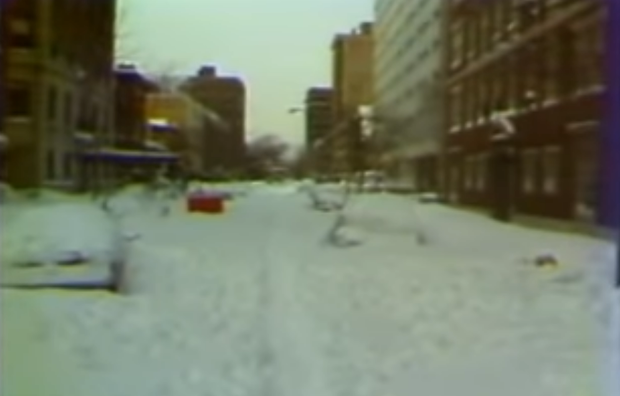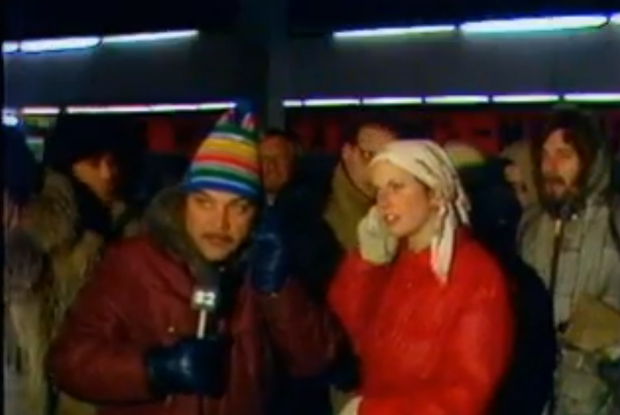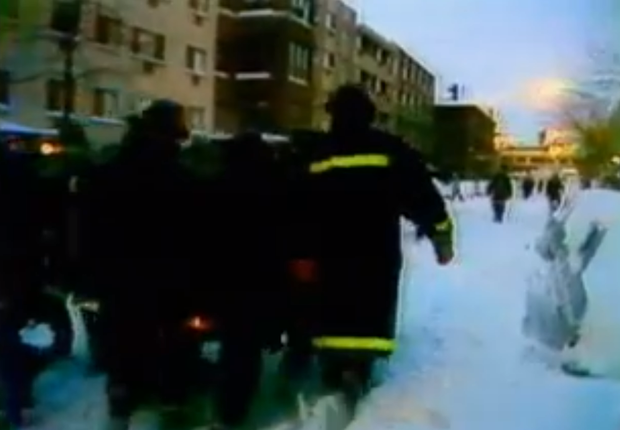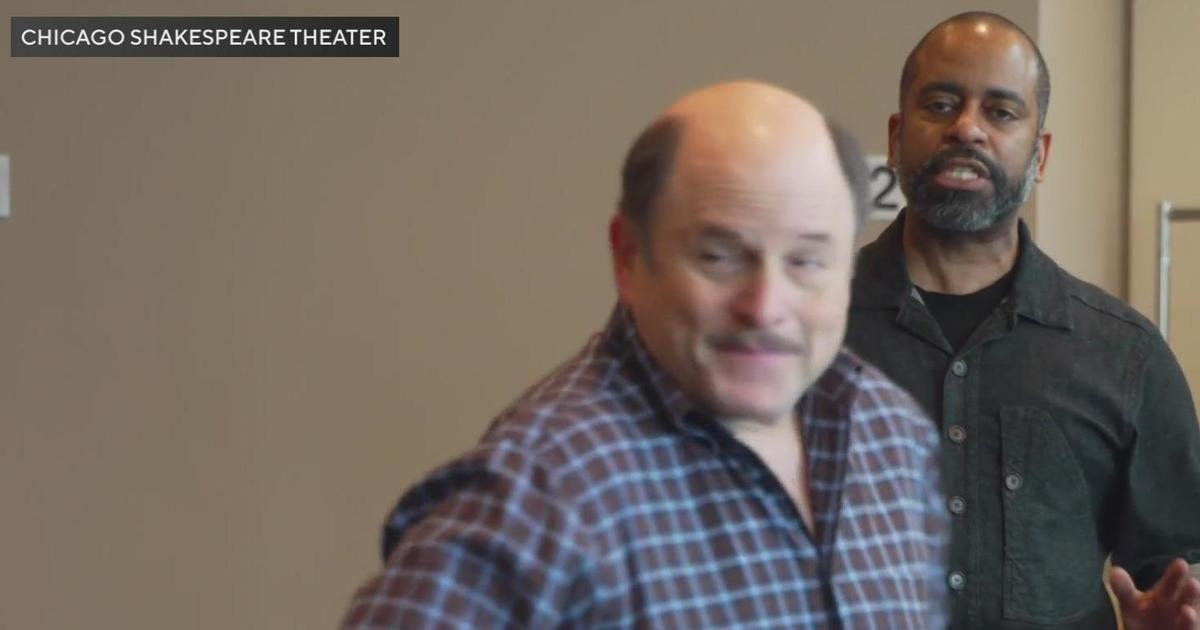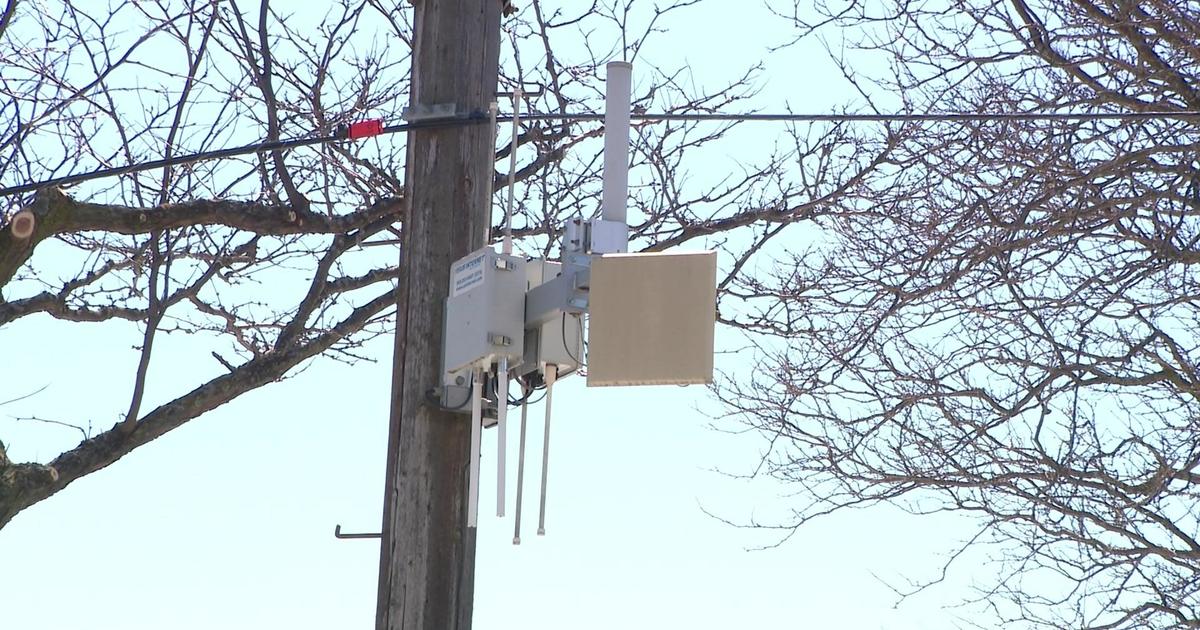On This Day 43 Years Ago: Blizzard Of 1979 Dumps Over 20 Inches Of Snow On Chicago, Goes On To Oust Mayor
CHICAGO (CBS) -- We could see flurries Thursday night, but we should perhaps count our blessings.
On this day 43 years ago – as well as the night before and the morning after – more than 20 inches of snow fell on the ground on top of 7 to 10 inches that were already on the ground from a snowstorm the previous New Year's Eve. The official total snowfall figure for Jan. 12-14, 1979 alone had been 18.8 inches, but the National Weather Service has since revised it to 20.3.
The Blizzard of 1979, and the city's response to it, ended up being the catalyst for the ouster of Mayor Michael Bilandic a few months later.
The snow began to fall with a vengeance on the night of Friday, Jan. 12, 1979, and it kept piling up until 2 a.m. on Sunday, Jan. 14.
Motorists found themselves snowed in, and transportation was rendered impossible.
On the night of Jan. 13, the snow shut down the Chicago Transit Authority Red Line – using the present-day name – north of the Belmont stop. The Purple and Yellow lines to Evanston and Skokie, respectively, were shut down altogether.
IC trains – what we now know as the Metra Electric District – were also erratic and barely running at all. Two Amtrak trains from Chicago to Champaign and Detroit were also canceled, as were most Greyhound buses.
CTA buses went on running, but with long delays. People were advised not to get on the roads in their cars, and by and large, they did not.
But if they did, they were likely not to get far. Interstate 80 was closed from Interstate 55 west all the way to Iowa. In Cook County, all major east-west roadways were closed west of Arlington Heights.
Meanwhile, O'Hare International Airport was shut down for what was then only the sixth time in its history up to that point. Flight after flight was canceled as snow piled up to 26 inches at the airport.
CBS 2's Chuck Gomez reported thousands of passengers were left stranded and nearly every hotel within 15 minutes of the airport was at capacity. Many downtown hotels also quickly filled up.
Mayor Bilandic came to the CBS 2 newsroom at our old building at 630 N. McClurg Ct. to talk live about the crisis. He advised that with schools closed that coming Monday for Dr. Martin Luther King Jr. Day, motorists should move their cars to Chicago Public Schools parking lots and playgrounds rather than leave them on the street.
"We're going to clear all of the parking lots and playgrounds and schools, and ask the citizens to take their cars to those playgrounds rather than leave them on the street, so that our clearing equipment will be able to function at peak efficiency under the circumstances," Bilandic said.
CBS 2 Coverage Of The Blizzard Of '79: Part 2 (See Above For Part 1)
The snowstorm was even powerful enough to cause serious damage to buildings. As CBS 2's Elizabeth Brackett reported at the time, the Lakeshore Racquet Club on Fullerton Avenue near DePaul University saw snow pile up on the roof and collapse on the tennis courts in the center of the building.
Club manager Jeff Kaiser said a building engineer had said the truss roof of the structure was not in danger of collapsing and there was not a need to evacuate ahead of time. But the roof did collapse, and fire crews feared the walls could come down too. No one was injured in the roof collapse.
The health club had to be rebuilt and remodeled from scratch to become what is today known as Lakeshore Sport & Fitness.
CBS 2 Coverage Of The Blizzard Of '79: Part 3
CBS 2 weatherman John Coughlin forecast during the 10 o'clock news that Saturday that the snow should be stopping before dawn, and it did. But Coughlin himself couldn't get break away from our building to go home and get his usual three-piece suit, and ended up dressed like he was ready for a Florida vacation.
CBS 2 Coverage Of The Blizzard Of '79: Part 4
But the problems didn't end when the snow finally stopped falling.
CBS 2's Emery King reported on Sunday, Jan. 14 that Mayor Bilandic said cleanup was progressing well and things should be relatively normal by the Monday morning rush. But by Thursday, Jan. 18, some roads were clear, but many were not. Chicagoans were complaining that the city was not prepared for the big snow, and on a CBS 2 special that Thursday, one viewer asked why Montreal, Toronto, and Minneapolis could clear two to three feet of snow in 24 hours - while Chicago wasn't "organized" enough to do so.
The piles of snow the blizzard left behind also posed a problem for emergency vehicles. On Thursday, Jan. 18 as CBS 2 went live in East Lakeview, one woman named Sue complained to CBS 2's Bob Wallace that there had been a fire on Briar Place and fire equipment had trouble getting down the unplowed side street.
Fire Commissioner Richard Albrecht told CBS 2 at the time that said one person died and 20 people were injured in the Briar Place fire, and more than 100 people were rescued.
Around the city, Chicagoans were fit to be tied as the snow wasn't being cleared and garbage was piling up. For days after the snowstorm, transportation remained anemic - and some people's cars were stuck in the snow for the rest of the winter.
As frustration mounted, Chicagoans placed the blame squarely on Mayor Bilandic's administration. Chicagoans from every part of the city charged him with failing to keep the streets plowed. In particular, the Chicago Sun-Times recalled, African American leaders were infuriated that express 'L' trains were bypassing West Side neighborhoods as they headed from downtown to the western suburbs during the snowstorm.
Columnist Mike Royko, then with the Sun-Times, remarked that city crews didn't have a clue about dealing with snow, because their skills revolved around cranking out votes on Election Day.
As the criticism swelled, Bilandic was contrite.
"We all learn from our mistakes. I've made them, and I freely admit it," he said in a 1979 news conference.
But that wasn't enough.
In the mayoral primary the following month, challenger Jane Byrne focused on the snowstorm as she campaigned against Bilandic. She even taped a commercial with snowflakes falling around her.
"No one could stop the snow, but good planning can prevent the collapse of public transportation and clean the city up fast," Byrne said in the commercial.
Byrne went on to win the 1979 primary in a landslide, and won the general election in April. She served one term before being ousted by Harold Washington in 1983.
The Blizzard of '79 did not set a record. The Chicago snowfall record is still held by the blizzard of Jan. 26-27, 1967, which dumped 23.0 inches.
Two more recent blizzards have also dumped more snow on Chicago than the Blizzard of '79 – the blizzard of Jan. 1-3, 1999, which dumped 21.6 inches, and the blizzard of Jan. 31-Feb. 2, 2011, which dumped 21.2 inches.

